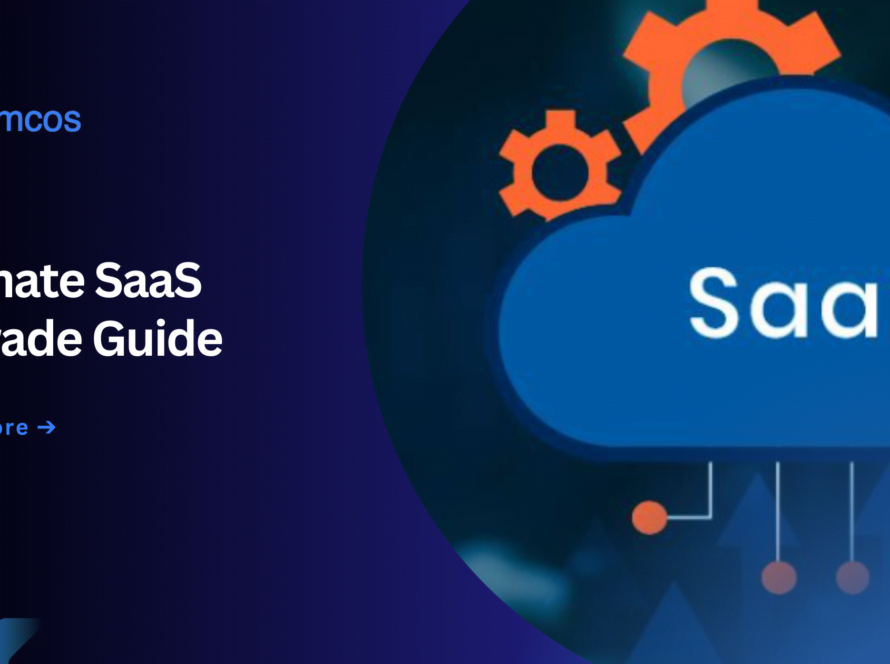Construction technology solutions or more specifically, construction software takes the form of SaaS platforms that are specifically aimed at improving many aspects of construction projects. These platforms centralise such activities as scheduling, tracking of tasks, document sharing and collaboration. They allow real-time data of the projects; they also let different teams work concurrently and allow management of budgets and progress from remote places.
The advantages are such as increased accessibility, cost-efficiency, greater capacity and higher security levels, which real-time tools like Procore and Buildertrend provide construction professionals to manage tasks effectively and have a clear vision of the works; thus, construction projects convert into a more streamlined and successful initiative.
Table of Contents
What are construction SaaS platforms ?
Construction SaaS means Software as a Service. It consists of cloud-based tools built to facilitate and enhance many facets in the process of managing construction projects. This includes planning, tracking of activities, document management and communication within one integrated system. They provide real-time access to project information, collaboration of teams, budget management and tracking of progress with ease from any location.
Other advantages include added accessibility, cost-effectiveness, scalability and increased security. Various examples are Procore and Buildertrend, which support construction professionals in managing tasks, sharing documents and maintaining an overview of the projects, leading to a well-organized venture with positive success.

Need of construction SaaS –
Construction SaaS platforms help address some of the biggest project management issues by improving, real time data access, document management and status updates; overall construction SaaS platforms tend to lead to better project outcomes.
1. Enhanced Collaboration
Overlapping of the contractors’ and subcontractors’ work and their coordination with clients entail considerations in construction projects. SaaS platforms are great for collaboration since using a single app means there is no need for multiple communication channels and document exchange as they are all in the same platform. It also makes sure that all the stakeholders will have a real-time view of the exact status of the project and will eliminate confusion that hamper the efficient coordination of project activities.
2. Real-Time Data Access
Usually, cloud-based solutions allow access to project data and any updates from the internet and at any geographical location. It helps in decision making since it offers real time information hence enables organizations to come up with quick solutions to changes or problems. Consequently, teams are capable of solving issues faster and maintain projects in proper order no matter an organization’s location they are working from.
3. Efficient Document Management
Centralization of major data in the cloud and versioning resolve the problem of many papers, such as blueprints and contracts. In a cloud environment, all the documents are uploaded in one place where it is retrieved and edited with ease apart from implementing change tracking systems. This kind of approach eliminates errors, makes sure that everyone is updated and makes the project look more organized and efficient.
4. Improved Project Tracking
Additional tools like tasks, Gantt charts and progress help to improve project control. These tools included the timelines, the responsibility assignment matrix and progress tracking chart all of which present considerable visual advancement over conventional Gantt charts for purposes of monitoring and tracking of tasks. This makes it easier for projects to be on track, deadlines met and any problems averted so as to guarantee timely project delivery.

Key Features of Construction SaaS Platforms
Integrated software solutions meant for construction businesses include key components of project management, paperwork, communications, as well as the management of costs. These tools enable the optimisation of processes, improve efficiency and facilitate project monitoring and supervisions for the successful completion of projects.
1. Project Management
Management characteristics found in SaaS platforms include Task Management, which allows its users to track tasks, due dates and relevant milestones; Gantt Charts which provide a graphical view of project’s timeline and its interdependencies; Resource Management features that enable users to effectively manage and allocate resources. The above tools collectively improve the management of projects with an aim of improving the rates at which they are complete jointly with the performance rates.
2. Document Management
Document management functions in SaaS solutions include Cloud Storage, that provides users with easily accessible access to documents, blueprints and contracts; Version Control, which tracks changes and ensures the availability of the most updated document versions; and Document Sharing, which enables the effective and secure sharing of files with other stakeholders. These features automate processing of documents and simplifies sharing of information.
3. Communication and Collaboration
The communication and collaboration tools in SaaS platforms include but not limited to; Real-Time Messaging which enables the team members, subcontractors and the clients to have instant communication; Discussion Boards to centralize the communication on certain aspects of the project in a centralized forum and hence does not scatter the information; and Notifications and Alerts which aid notification of the team members and subcontractors when there are new updates and changes to the project.
4. Budget and Cost Management
Other functional modules in SaaS platforms are Expense Control for tracking and comparing expenses to the budget, Financial Statement section that provide various reports for financial performance and cost control and Invoice Reconciliation for effective invoicing. These tools assist in financial discipline and management of resources as far as the allocated budgets are concerned.

How Are Construction SaaS Solutions Revolutionizing Project Management ?
Speaking of the modern trends and opportunities in construction management, Software as a Service (SaaS) are among the most revolutionary in terms of productivity and result. In addition to revolutionizing project management, these platforms are putting into place benchmarks that are taking the industry by storm. Below, let me show you five main areas whereby construction SaaS solutions play the role of changing existing project management.
1. Streamlined Communication and Collaboration
The communicated aspect has to be regarded as one of the most valuable benefits of construction SaaS solutions as it helps to increase communication and cooperation between stakeholders. Standard practices involve sending emails and making phone calls, which is highly ineffective since most of the time information is split across numerous channels and misunderstandings are bound to happen. SaaS platforms consolidate all communications pertaining to a particular project, enabling team members, subcontractors and clients to post updates, documents or feedback in real time.
For instance, there is Procore and Buildertrend that provide such as communication tools like instant messaging, document sharing and project dashboards to enable all the stakeholders to communicate effectively. They are beneficial in this regard because they help to minimize mistakes and at the same time help to facilitate speedy decision making, which is compulsory in order to increase the chances that a project will be accomplished on time and within the right budget.
2. Increased Projects Visibility and Control
Construction work mainly comprises a sequence of activities, time and target completion hence it is difficult to keep a tab on the construction progress and productivity. SaaS solutions help overcome this problem through delivered added project tracking and reporting tools.
Software such as PlanGrid and CoConstruct help to provide live updates of project progress, work completion, expenditures and resources among others. Through dashboards and visual analytics, issues that appear later on the project is detected on time with the subsequent decision making based on facts. This enhances visibility when it comes to managing the expectations of the people, controlling time on projects and almost everything that aims at ensuring that all the objectives set are achieved.
3. Improved Document Management
Proper document handling remained an important focal area in construction projects since different documents such as blueprints, contracts, permits, among others, are vital to the construction projects. Document management becomes much easier when companies decide to implement SaaS solutions due to their cloud characteristics.
Some of the automation tools include Bluebeam and Viewpoint which has a centralized storage of all documents required for the project with enhanced security features. These solutions contain their own versions, meaning that always the latest papers are employed and providing access to the earlier ones. Furthermore, things like automated document distribution as well as electronic signatures minimize obstructions of the approvals and also, speed up the process.
4. Advanced Cost Management
The major concept of cost management is an important element of project management hence essential to assess. Construction SaaS solutions have unique features that enable you to monitor cost and budget and to predict the cost results.There are other software such as Buildertrend and CoConstruct which give out the details of cost estimates, budget monitoring and expenses.
These platforms provide continuous updates of the financial aspect of a project and offer cues on excess spending and times when a change in budget is necessary. These tools also help a construction firm to exercise optimal control over its financial performance, manage existent risks and prevent potential costs that negatively affect the firm’s bottom line.
5. Enhanced Risk Management
The concept of risk management is therefore simply a natural part of the construction project management where potential risks with reference to particular project are identified then minimized in order to increase the likelihood of the project success. SaaS solutions have inherent extensive features for proper risk assessment and management which ensures that risks are prevented before occurring.
The two platforms of project management are Procore and Aconex, which have frameworks that enable the identification, analysis and mitigation of risks during the different phases of the project. Such tools include risk registers, incident reporting and deal safety management functions that help organizations to ensure that safety in the workplace is upheld and complied with. Through risk management incorporated in their SaaS solutions, construction firms reduce signal disruptions, intensify security and guarantee the accomplishment of the tasks.
Thus, Construction SaaS platforms are changing the approach to managing projects by amplifying the level of communication, making project more transparent, handling documents and documentation and providing highly developed work with the costs and risks. Since most of the common functions are bundled into comprehensive cloud solutions, these systems optimise work flows, add more control and increase productivity of construction ventures.
About safety, real time analytics and data access, document management and effective collaboration tools of Construction SaaS platform – they assist the teams in achieving better control of projects, facilitating identification of risks and ensuring timely and cost efficient project delivery. Thus, these technologies should be adopted into modern construction firms to ensure that they compete adequately and deliver good projects.

How does Himcos help?
Himcos specializes in SaaS app modernization, offering top-tier expertise to transform your software. Our team ensures exceptional quality by improving performance, reducing costs, enhancing security and fostering innovation. We deliver scalable, secure and high-performing applications tailored to your needs, helping you stay competitive in a rapidly evolving market.



